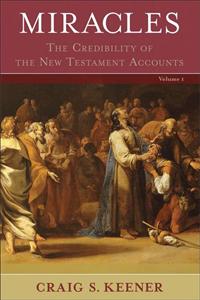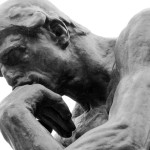“Miracles”
by Leroy Huizenga
Filed under Book Reviews
Miracles: The Credibility of the New Testament Accounts
by Craig S. Keener
Baker Academic, 1,172 pages, 2011
On October 13, 1917, seventy thousand Portuguese witnessed the sun dancing in the sky at Fátima, the conclusion of a series of visitations of the Virgin Mary to three shepherd children. In 1964, a teenage woman evangelizing in the Dominican Republic fainted from shock when she healed an elderly man’s shriveled hand through prayer. In 1994, a friend recounted to me the healing of her shattered knee through the laying on of hands. Having inherited the Enlightenment’s a priori rejection of the supernatural, many people would reject these claims outright. But would they be justified in doing so?
 In Miracles: The Credibility of the New Testament Accounts, Craig S. Keener demonstrates that those who take their cues from David Hume and say miracles cannot happen are wrong, and then in a second step proceeds to show why they are wrong. And as Keener, a professor of New Testament at Asbury Theological Seminary, shows in great detail, the reasons are not pretty.
In Miracles: The Credibility of the New Testament Accounts, Craig S. Keener demonstrates that those who take their cues from David Hume and say miracles cannot happen are wrong, and then in a second step proceeds to show why they are wrong. And as Keener, a professor of New Testament at Asbury Theological Seminary, shows in great detail, the reasons are not pretty.
The rise of critical biblical studies is bound up with the rise of modernity, as the Reformation reliance on the sensus literalis became the modern historical-critical method performed according to the canons of secular academia. It was thus an enterprise divorced from the faith and life of the Church, even while it demanded the Church accept its so-called “assured results.”
But, as often observed, the method became more of an ideology with the advent and dominance of “scientific history,” which operates within a closed universe of material cause and effect. The high-water mark of the historical-critical method is the approach of the early-nineteenth-century scholar H. E. G. Paulus, who sought purely natural explanations for biblical miracles. To this day, major denominations’ Sunday School curricula teach that the miracle of the fish and the loaves is best explained to children by telling them that Jesus’ example in sharing what little he had inspired the five thousand to share the fish and loaves hidden under their tunics.
Even conservative, believing scholars often operate according to the canons of the historical-critical method. Believing exegetes who would interpret the gospels theologically, for instance, usually seek what the evangelist was thinking or, using a narrative hermeneutic, what the story suggests about God and the work of the Church. Rarely do they engage head-on the possibility that the miracles happened.
Either the miraculous dimension is dismissed as legend (by those who don’t believe in miracles) or treated in terms of story outside normative late-modern reality (by those who do). It was this dearth of belief in the reality of the miraculous that precipitated Keener’s work. What became a two-volume, 1,172-page book began a decade ago as a footnote in a commentary on Acts. “Because some scholars have treated miracle claims in the Gospels and Acts as purely legendary on the premise that such events do not happen, I intended to challenge their instinctive dismissal of the possibility of such claims by referring to a few works that catalogued modern eyewitness claims of miracles.”
Read the rest of the review.
Related Posts
Note: Our goal is to cultivate serious and respectful dialogue. While it's OK to disagree—even encouraged!—any snarky, offensive, or off-topic comments will be deleted. Before commenting please read the Commenting Rules and Tips. If you're having trouble commenting, read the Commenting Instructions.












